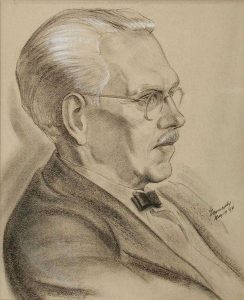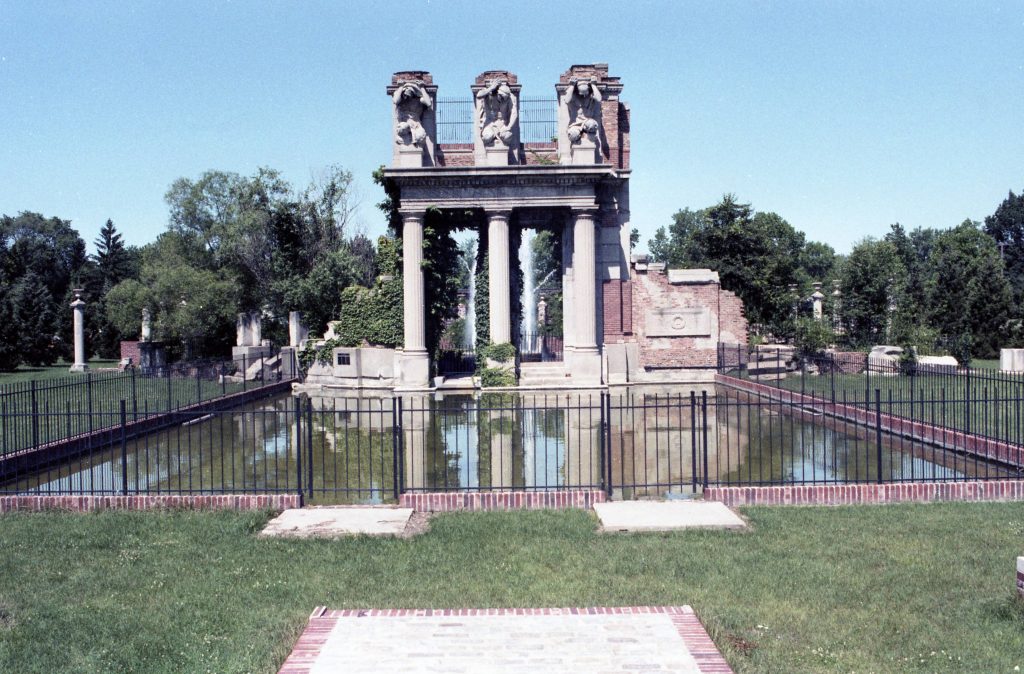
Photo info ...
Credit: Coral Taflinger Bank, NewfieldsView Source
(Mar. 3, 1891-Aug. 13, 1981). Elmer E. Taflinger, or “Taf” as he was called, was born in Indianapolis and attended where he learned art from and George Bridgeman. He also studied at the New York Art Students’ League for six years and worked under prominent New York stage designer David Belasco (1914-1922), who sponsored his studies of the classic figure form in Florence, Italy.
Taflinger eventually returned to Indianapolis in 1928 because of his belief in the art movement toward “regionalism.” He worked in the studio of , a nationally known printmaker, and eventually moved to his own permanent studio in the Carriage House at 158 East 14th Street where he taught popular life-drawing classes. He also taught at the Indianapolis Art League ().
Taflinger always enjoyed controversy, addressing such diverse issues as faculty turnover in the 1930s at the . He contested a commission for the 1934 Chicago World’s Fair given to non-Indiana artist Thomas Hart Benton and entered a sales tax debate during the Paul V. McNutt gubernatorial administration in the 1930s.

He also fought five city administrations to put in place his most enduring project, “The Ruins,” in , which includes The Races of Man, by Austrian-born American sculptor Karl Bitter. Bitter’s sculpture represents one Caucasian, one African American, and one Asian man working together.
Bitter’s creation supported the St. Paul Building in New York City from 1896 to 1958. Taflinger spearheaded Indianapolis’ involvement in the contest to win the statues when the Western Electric Company announced that it was razing the St. Paul Building to build new headquarters on the site.
Taflinger’s initial design, intended to depict the history of America, included a reflecting pool, twin-jet fountains, and extensive landscaping. His plan led Western Electric to grant Indianapolis possession of Bitter’s sculpture. A lack of funds and a series of adjustments delayed the project, which was expensive to undertake. “The Ruins” finally were dedicated in 1973, though Taflinger continued to make changes through 1976.
Taflinger continued to teach, both in his studio and at the Indianapolis Art League until 1965. In addition to “The Ruins,” his most notable achievements were the inclusion of his drawings in a classical anatomy textbook by George Bridgeman; the mural (1938, now at Manual High School), exhibited from Indiana to New York; and the fresco (1940), a wedding gift to his sister Coral.

Help improve this entry
Contribute information, offer corrections, suggest images.
You can also recommend new entries related to this topic.